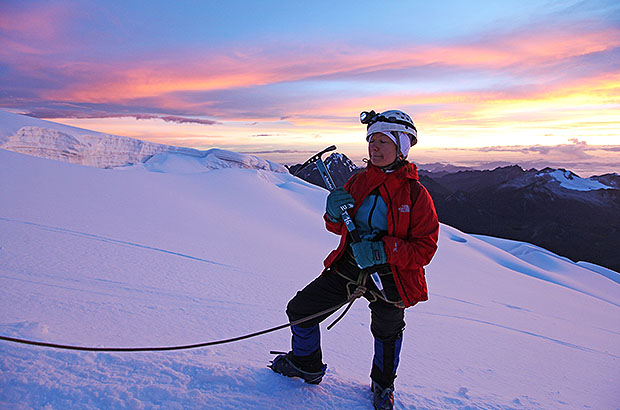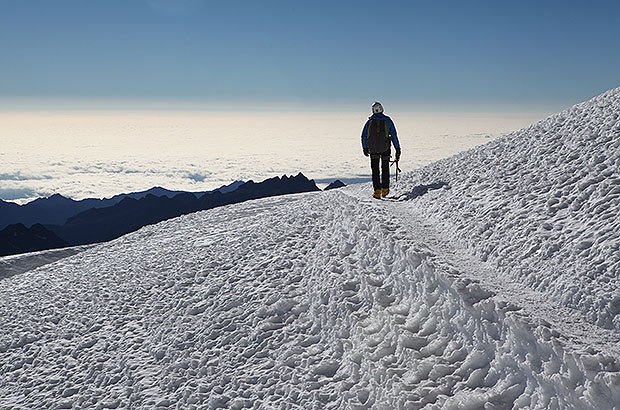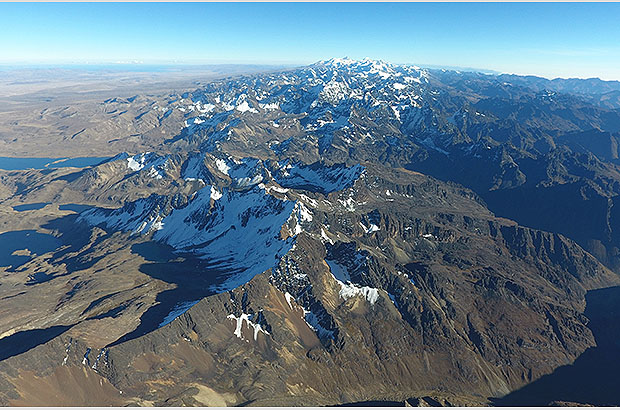FAQ
- Bolivia climbing questions
-
Mallorca island and rockclimbing
- What are main specifics of rockclimbing trip to Mallorca
- Mallorca island impressions
- Rockclimbing safety Spain
- Mallorca climbing accommodation
- What season is possible for rockclimbing in Mallorca
- Transport accessibility of climbing sectors in Mallorca
- Active vacation in Mallorca
- Saint Anthony night in Mallorca
- Peru climbing questions
- Gear reviews
-
Safety in the mountains
- How NOT to climb the summit?
- Mountain navigation
- At the limit of possibilities
- Mountain thunderstorm
- Solo ascents and mountain trips alone
- Mutual responsibility in mountaineering
- Safety illusions in the mountains - a rope
- Independent team of two
- Mountain troubles
- Psychological problems in the mountains
- Health in the mountains
-
Elbrus questions
- Elbrus climbing gear
- Climbing Elbrus with children?
- Mount Elbrus location?
- Elbrus logistics
- How to get to Mount Elbrus?
- Elbrus German airfield?
- Elbrus difficulty grade
- 5 points beginner must know about Elbrus
- How to prepare for Elbrus?
- Are there avalanches on Mount Elbrus?
- Climbing Elbrus solo?
- Seasonality of climbing Mount Elbrus
- How much time climbing Elbrus takes?
- Clothes for Mount Elbrus?
- Pressure at the top of Elbrus?
- Elbrus air temperature
- Elbrus sightseeing
- How much to climb Elbrus
- Gear questions
- Mountaineering questions
- Mountain climbing training
-
Rockclimbing questions
- Rockclimbing gear
- How to choose your first rockclimbing shoes
- The hand power in roclcimbing
- What is Rockclimbing tours
- Non olymnic rockclimbing
- What is rockclimbing?
- Where do you climb?
- Where and when we organize our rockclimbing programs?
- What is rockclimbing?
- Rockcliming program class?
- Climbing motivation
- Horse riding tours
- Iceclimbing questions
-
Questions on the alpine programs
- What to climb in Morocco?
- Weekend summit climb
- Georgia 2023
- Pico Aneto - what is that mountain?
- Mountain programs format
- Mountain climbing food ration
- Queries on the alpine program climbing Mount Bazarduzu
- Queries on the Kamchatka alpine program climbing
- What is combined program?
- What is sightseeing program?
- What is pilot program?
- What programs you have of the medium complexity level?
- Basic expedition rations
- Prices for the mountain climbing programs
- Queries on the Mountain Course in Adyl Su valley
- Program complexity?
- Questions about MCS AlexClimb
- Questions related to trekking programs
Huayna Potosi
General information on the Huayna Potosi 6088 m climb
Read in Telergam in English
Leer en Telegram en Español

Sunrise view of Huayna Potosi peak from the very beginning of the route, from the hut at the altitude of 4700 m
Covered with an ice shield and shining with a crimson flame at dawn, the massif of Huayna Potosi is the most accessible and relatively uncomplicated peak with an altitude of 6088 meters, located just 20 kilometers from the capital of Bolivia - La Paz. The name of the summit can be translated from the Aimara language (the language spoken by the natives before the integration of the Quechua language) as "Young Mountain".

The frontal photo shows the entire upper part of the Huayna Potosi climb
Huayna Potosi is the most accessible and popular climbing peak in the Cordillera Real, with easy access and sufficient tourist infrastructure - there are two large shelters and several small huts along the route. The traffic along the ascent route during the winter season is quite high, the shelters can be densely crowded.

Climbing to the summit of Huayna Potosi
For all its accessibility and technical simplicity, Huayna Potosi has a significant altitude, exceeding 6000 meters. This means that for a safe and comfortable ascent, pre-acclimatization is required. At least a few days should be actively spent in La Paz and its environs in order to adapt to the level of 4000 - 4500 m, for climbing to the heights of 5500-6000 m without significant health risks.

On the summit dome of Huayna Potosi
The summit of Huayna Potosi is an almost ideal location for getting full acclimatization for further, more difficult ascents at altitudes of 5000+ meters to the summits of Illimani, Huascaran, Alpamayo, etc.

On the summit of Huayna Potosi
The summit of Huayna Potosi is climbable throughout the year, but the preferred time is the South American winter, from June to August, during the period of relatively dry and clear weather. Taking into account the fact that the Bolivian capital La Paz is located at an altitude of more than 4000 m, climbing Huayna Potosi does not present significant physical difficulties - the total altitude gain along the ascent route from the starting point, which can be reached by car, is only 1200 meters. The summit push section of the route - 800 vertical meters - begins from a comfortable shelter 5200.

Discussing the tactics of climbing Huayna Potosi on the eve of the route.
The Huayna Potosi climbing route does not involve overcoming any serious technical difficulties. However, it should be kept in mind that this assessment of difficulty is made in relation to more difficult technical climbing routes and can be very subjective. Climbing Huayna Potosi requires the use of the ice equipment - crampons and an ice axe.

When climbing Huayna Potosi, the entire basic set of mountaineering equipment is used.
While the entire climbing route is usually well visible and follows a trodden path, one should not forget the dangers of bad weather and the need to have mountain navigation skills. In fog or snowfall, you can easily lose the thread of the route and die in some crevasse. The upper part of the route passes along heavily crevassed glacier - despite the presence of a trail, it should not be neglected to use a rope to protect against falling into a crevasse.

Panorama of the Cordillera Real from the summit of Huayna Potosi
In general, I can say that Huayna Potosi is an excellent "starter" for many climbing routes in South America. As well, climbing Huayna Potosi is a great opportunity to try your abilities (preferably under an eye of an experienced guide) at the high altitudes of the Andean highlands.
The author of the text and photos - Alexey Trubachev
MCS EDIT 2023
Our Principles
AlexClimb Rule #1 - Safety First
From the very beginning of our activity, here nearly 16 years, the first Principle of work of School of mountaineering and rock-climbing of MCS AlexClimb is the Safety Priority. On the basis of this Principle all process of training is based, all programs and rounds are developed and carried out only within this main principle. We consider that at professional approach to development of programs, at personal discipline and correctly put motivation - occupations by mountaineering and rock-climbing are COMPLETELY safe. And from the return - all troubles and accidents in our sport come from nonprofessionalism, from ignorance or neglect by elementary standards of safety, from irrational motivation, from revaluation of own forces and opportunities. All these prerequisites we COMPLETELY EXCLUDE in our work - ours Rock-climbing, Ice climbing and Mountaineering are based on one Principle - the Safety Priority. In rock-climbing, mountaineering and ice climbing, the Priority of Safety of MCS AlexClimb-is your personal security and comfort irrespective of, than we are engaged - we train muscles and we work technology of the movement in the sports hall and on the rock climbing wall, we make the way through snowstorm to top or we relax on golden sand of the Caribbean beach after hot day of trainings on rocks. The Safety priority - the main credo of School of mountaineering and rock-climbing of MCS AlexClimb.
AlexClimb Rule #2 - Leave No Trace
Closely interacting with Nature, working with the active programs in mountains, woods, lakes and rivers, we perfectly understand the importance of carefull and respectfull bahavior towards the Nature, for its resources. From the very beginning of our outdoor-activity we adopted rules of Leave No Trace technique - the standard of behavior of the person accepted in all the civilized world in relation to environment and especially - to the wild nature. After all on the relation of people to the nature near which they exist, itself can draw dalekoidushchy conclusions on the relation of these people to... Where and as we didn't travel - we don't reserve any garbage, we try to reduce whenever possible our influence on environment to a minimum. We clear earlier zagryazyonny tourist parking of the left garbage, we take out and we take out to utilization places that to us other people left there. We consider that only thus, at personal individual consciousness of each citizen, each tourist, climber or autotraveller, we will be able to keep the nature surrounding us in its state, natural, suitable for life, - in it pledge of the healthy future for ourselves and our children.





